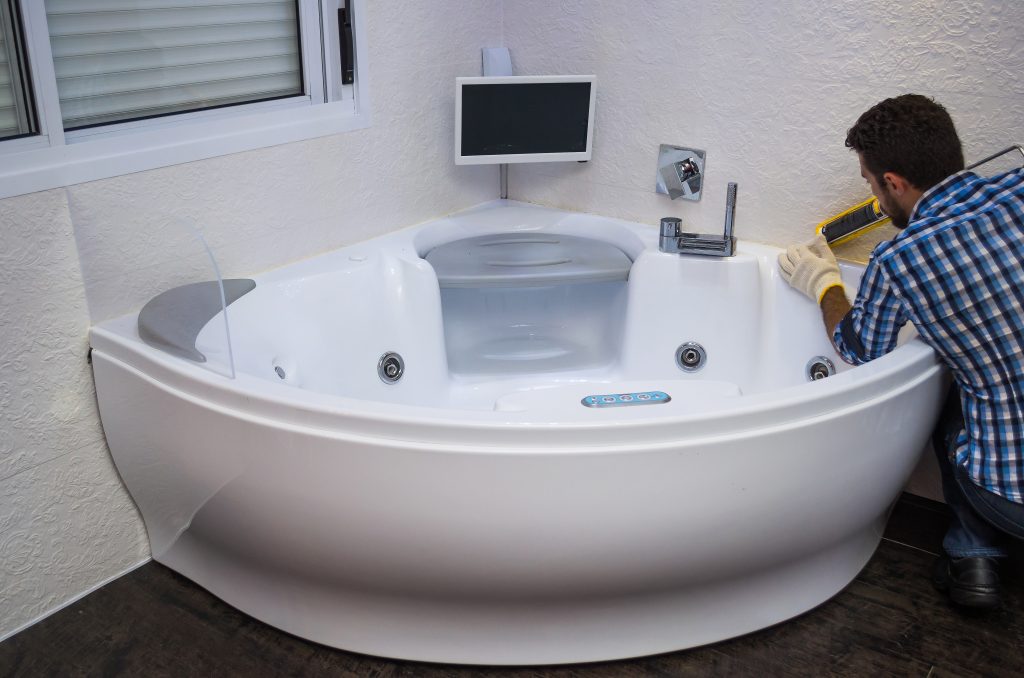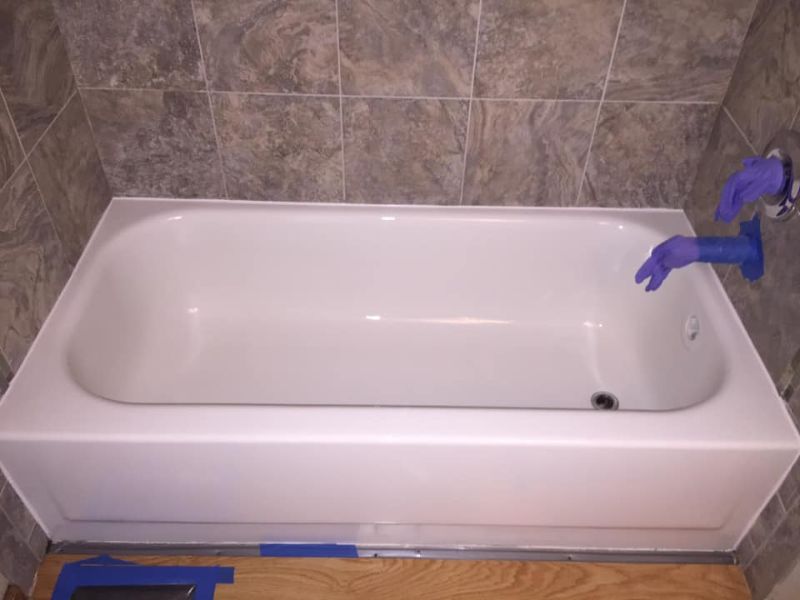Exploring Plumbing Fundamentals When You Install a Bathtub
Exploring Plumbing Fundamentals When You Install a Bathtub
Blog Article
Presented here in the next paragraph you can get additional superb tips involving How to Install a Bathtub.

Setting up a tub isn't specifically brain surgery, but it does require strong plumbing, carpentry, and in some cases, tiling skills. Replacing an old bathtub with a new one is also a moderately challenging task. If the old bathtub is conveniently obtainable, the task can relocate immediately; if you need to open a wall to get rid of the old tub as well as place the new bath tub, the job is a lot harder. In either instance, the project is within a residence handyman's skills, although you will certainly require a helper to leave the old bathtub and set in the new one. See to it you have qualified yourself for the work and are comfortable trying it. As opposed to employing a contractor to take over a halfway-completed project, it is much better to think about using one prior to you start. Chances are you may require a specialist plumber to make tube links.
This write-up will certainly assist you install a brand-new bath tub in your shower room if you have currently acquired a brand-new tub as well as do not require to change the plan of your previous water supply pipes.
Your tools as well as product list need to comprise the following:
Planning for the Installment
To start with, the sustaining structure provided with the bath needs to be fitted (if called for) according to the manufacturer's guidelines. Next off, fit the faucets or mixer to the tub. When suitable the tap block, it is essential to make certain that if the faucet includes a plastic washer, it is fitted in between the bathroom and also the faucets. On a plastic bath, it is additionally sensible to fit a supporting plate under the taps unit to stop stress on the bathtub.
Fit the flexible tap connectors to the bottom of both faucets making use of 2 nuts as well as olives (in some cases supplied with the tub). Fit the plug-hole outlet by smearing mastic filler round the sink outlet opening, and after that pass the outlet via the hole in the bath. Use the nut supplied by the supplier to fit the plug-hole. Examine the plug-hole outlet for an inlet on the side for the overflow pipe.
Next off, fit completion of the flexible overflow pipeline to the overflow electrical outlet. Afterwards, screw the pipeline to the overflow face which should be fitted inside the bath. Make certain you make use of every one of the supplied washers.
Connect the trap to the bottom of the waste outlet on the tub by winding the string of the waste electrical outlet with silicone mastic or PTFE tape, and also screw on the catch to the electrical outlet. Attach all-time low of the overflow tube in a comparable manner.The bathroom must now be ready to be fitted in its final placement.
Removing Old Touches
If you require to replace old faucets with brand-new ones as a part of your installation, then the first thing you must do is disconnect the water system. After doing so, turn on the taps to drain pipes any kind of water staying in the system. The procedure of getting rid of the existing faucets can be quite troublesome due to the limited accessibility that is commonly the case.
Utilize a container wrench (crowsfoot spanner) or a tap tool to undo the nut that links the supply pipes to the faucets. Have a towel prepared for the staying water that will originate from the pipelines. When the supply pipes have actually been removed, use the exact same tool to loosen up the nut that holds the faucets onto the bath/basin. You will certainly require to stop the single taps from turning throughout this procedure. Once the faucets have actually been removed, the holes in the bath/basin will need to be cleaned of any old securing substance.
Prior to proceeding to fit the new faucets, contrast the pipeline connections on the old taps to the new taps. If the old taps are longer than the brand-new faucets, after that a shank adapter is needed for the new faucets to fit.
Installing the Bath tub
Making use of the two wooden boards under its feet, position the tub in the called for placement. The wooden boards are handy in evenly spreading the weight of the tub over the location of the boards as opposed to concentrating all the weight onto four small points.
The following goal is to guarantee that the tub is leveled all round. This can be accomplished by inspecting the level as well as readjusting the feet on the bathtub up until the level reads level.
To set up faucets, fit the bottom of the furthest versatile faucet adapter to the suitable supply pipeline by making a compression sign up with; then do the same for the other faucet.
Activate the water supply and check all joints as well as new pipework for leaks as well as tighten them if needed. Fill up the tub and likewise inspect the overflow outlet and the regular electrical outlet for leakages.
Lastly, take care of the bath paneling as defined in the supplier's user's manual. Tiling as well as sealing around the bathtub should wait up until the tub has actually been made use of at the very least when as this will resolve it into its last setting.
Suitable New Touches
If the tails of the brand-new taps are plastic, then you will need a plastic port to avoid damages to the string. One end of the port fits on the plastic tail of the tap and also the other end offers a connection to the existing supply pipelines.
If you need to fit a monobloc, after that you will call for reducing couplers, which links the 10mm pipe of the monobloc to the common 15mm supply pipe.
Next off, place the tap in the placing hole in the bath/basin making certain that the washing machines remain in location in between the tap as well as the sink. Safeguard the faucet in place with the producer offered backnut. When the tap is securely in position, the supply pipes can be linked to the tails of the taps. The taps can either be linked by utilizing corrugated copper piping or with typical faucet connectors. The previous type should be linked to the tap finishes initially, tightening only by hand. The supply pipes can later on be connected to the other end. Tighten both ends with a spanner after both ends have been linked.
Tiling Around the Tub
In the area where the bathroom satisfies the ceramic tile, it is needed to seal the accompanies a silicone rubber caulking. This is important as the installation can move sufficient to break an inflexible seal, causing the water to permeate the wall surface between the bathroom and also the tiling, bring about complications with dampness as well as possible leaks to the ceiling below.
You can select from a variety of coloured sealants to blend in your fixtures and installations. They are offered in tubes and also cartridges, and are capable of sealing gaps up to a width of 3mm (1/8 inch). If you have a larger gap to fill, you can load it with spins of drenched paper or soft rope. Bear in mind to constantly fill up the bathtub with water before securing, to enable the movement experienced when the bathtub remains in use. The sealant can break fairly very early if you do not think about this motion before securing.
Additionally, ceramic coving or quadrant tiles can be made use of to border the bath or shower tray. Plastic strips of coving, which are easy to use as well as cut to dimension, are additionally quickly readily available on the marketplace. It is recommended to fit the floor tiles using waterproof or water resistant sticky and cement.
Bathtub Installation
How Important Is A Bathtub To Your Home?
High-quality baths, showers, and other bathroom updates are necessary when considering a smart investment in your home. It’s a room that you go to every day and one that is constantly being used by guests.The bathroom is one of the top trafficked rooms in a home and also one of the most valuable in terms of home resale.
Install Piping Before Tub
You will be using your existing drain and waste vent system, but pipes required include the hot and cold water supply lines and a pipe leading to a shower head. A mixing valve and shower head are also needed. Air chambers may be required.
Position the Tub
Lower the tub into place so that the continuous flange fits against the wall studs and rests on 1’x4' or 2’x4' supports. Anchor the tub to the enclosure with nails or screws inserted through the flanges into the studs.
NOTE: Remember, bathtubs and shower stalls may require support framing. A bathtub filled with water is extremely heavy, so check building codes and framing support before installing the tub.
Assemble Drain Connections
Assemble the bathtub drain connections by connecting the tub overflow with the tub drain above the trap, not beyond it. The trap will have a compression fitting that screws over the arm of the overflow assembly.
Place a Pipe For the Shower Head
First, locate a brass female threaded winged fitting and attach it to a framing support via a screw or a nail. Then run a pipe up the wall for the shower head. Sweat or solder the other side of the brass fitting to the top of the pipe.
Attaching Hot and Cold Water Lines
Attach your water lines for both hot and cold by sweating these directly into the hot and cold ports of the mixing valve. The mixing valve will be how water enters the tub’s system, not by the pipes themselves.
Install the Spout
Extend a piece of 1/2 inch pipe, or whichever length is specified in the manufacturer’s instructions, for the tub spout. Sweat on a male threaded fitting at the end of the pipe or use a brass nipple of the proper length and a 1/2 inch cap.
NOTE: At this point you should have your rough-in plumbing work inspected before proceeding further.
Check For Leaks
Restore the water pressure and check the drain connection and the supply pipes for any sign of leaking.
estore the Bathroom Wall
Replace the wall with moisture-resistant drywall as a base for your wall covering. Seal the joints between the wall and your new tub with silicone caulk as protection against water seepage.
https://www.berkeys.com/2016/12/02/bathtub-installation-dallas/

I was shown that editorial about Tools You Need to Install a New Bathtub through a good friend on another blog. Don't hesitate to take a moment to share this blog entry if you enjoyed reading it. Thank you so much for taking the time to read it.
Click For More Information Report this page